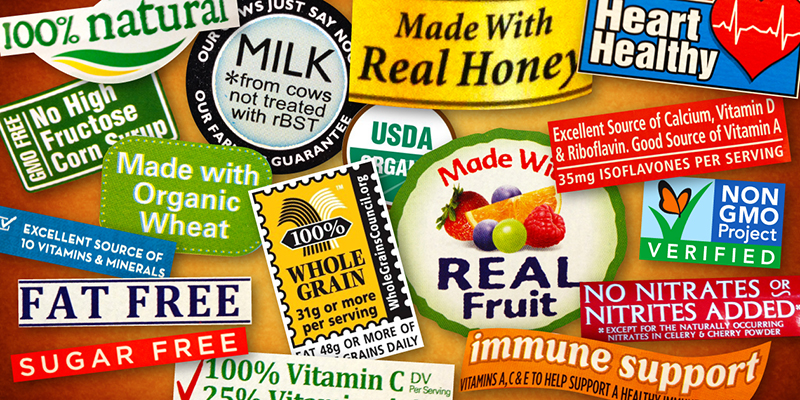The labels we see at the grocery shelves can be confusing. “Hormone-free,” “trans-fat free,” what does it all mean?
“0 Grams Trans-fat”
Basic definition: Despite basic math rules, 0 grams on a food label doesn’t mean ZERO. Crazy, huh? It means that the food contains less than 0.5 gram of trans fats per serving.
Body wisdom: Trans-fats has been shown to raise bad LDL cholesterol and lower good HDL cholesterol.
Be savvy: Trans-fats are sometimes replaced with unhealthy saturated fats, sugar or sodium which also isn’t ideal. In addition most foods with trans-fats, such as shelf-stable cookies, and muffins are high in calories and low in nutrients.
Key take-away: Avoid any product with “hydrogenated” or “partially hydrogenated” in the ingredient list; these terms indicate some trans fats. None of Choicelunch’s ingredients contain ANY trans-fats. 0, zilch, nada.
“Low-Sodium”
Basic definition: Contains 140 milligrams or less per serving. In general, processed foods are going to contain extra sodium. Most unprocessed foods will be very low in salt.
Body wisdom: Too much salt can lead to high blood pressure and stroke but we all need salt, too, for fluid retention and other basic bodily functions.
Be savvy: Bread products and other grain-based foods, including things that might not seem salty, like flour and corn tortillas have lots of sodium. One slice of some breads has two to three times the salt in a typical serving of potato chips.
Key take-away: Choose processed foods with fewer milligrams of sodium than calories. If a food contains 300 calories per serving, for instance, it should contain 300 milligrams or less of sodium. Choicelunch’s Nutritionist, Kelsey, checks each and every ingredient in our lunches and chooses items that are as low sodium as possible.
“Antibiotic-free”
Basic definition: You’ll see this on red meat, poultry, and milk to indicate that the animals were raised without being routinely given antibiotics to keep them healthy.
Body wisdom: Antibiotics given to animals may create antibiotic resistance in the animals, but supposedly this doesn’t affect humans.
Be savvy: If possible, look for meats and dairy that specifically call out that no antibiotics were given to the animals that produced your food. You never know what future science might reveal about these routine medicines.
Key take-away: Choicelunch uses meats and dairy products from farms promising not to routinely given prescriptions to their animals. We tend to think animals that need medicine to keep them healthy might not be the healthiest choices for our kids.
“Hormone-free”
Basic definition: This description appears on red meat and dairy products to indicate that the animals were raised without hormones, which are used to make animals gain weight faster or to increase milk output.
Body wisdom: Experts are still debating whether added hormones can cause harm when eaten by humans.
Be savvy: If possible, look for meats and dairy that specifically call out that no hormones were given to the animals that produced your food. You never know what future science might reveal about these routine injections.
Key take-away: Choicelunch uses meats and dairy products from farms promising not to routinely inject hormones and steroids into their animals. We tend to think animals that are drugged might not be the healthiest choices for our kids.







